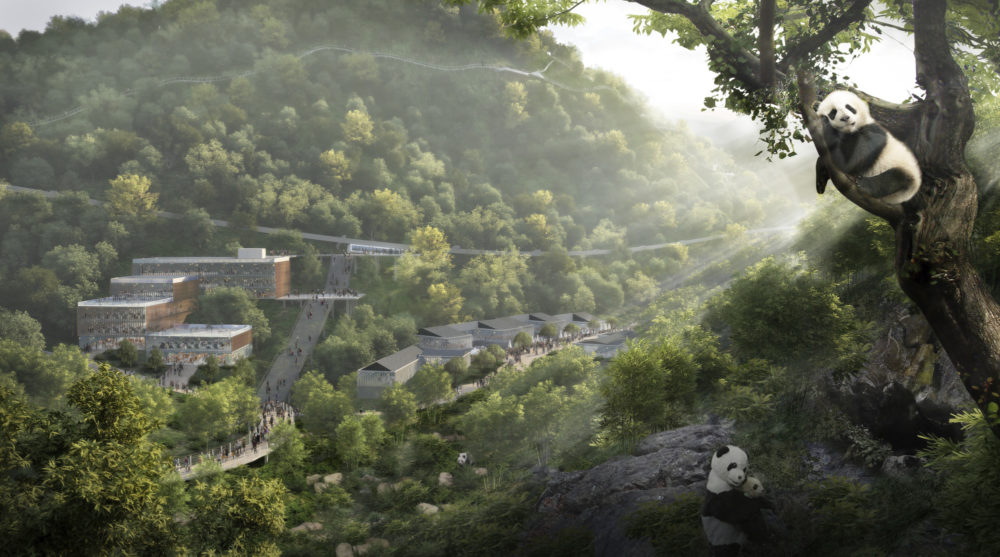
Chengdu Panda Reserve
Chengdu, China
 Sasaki
Sasaki
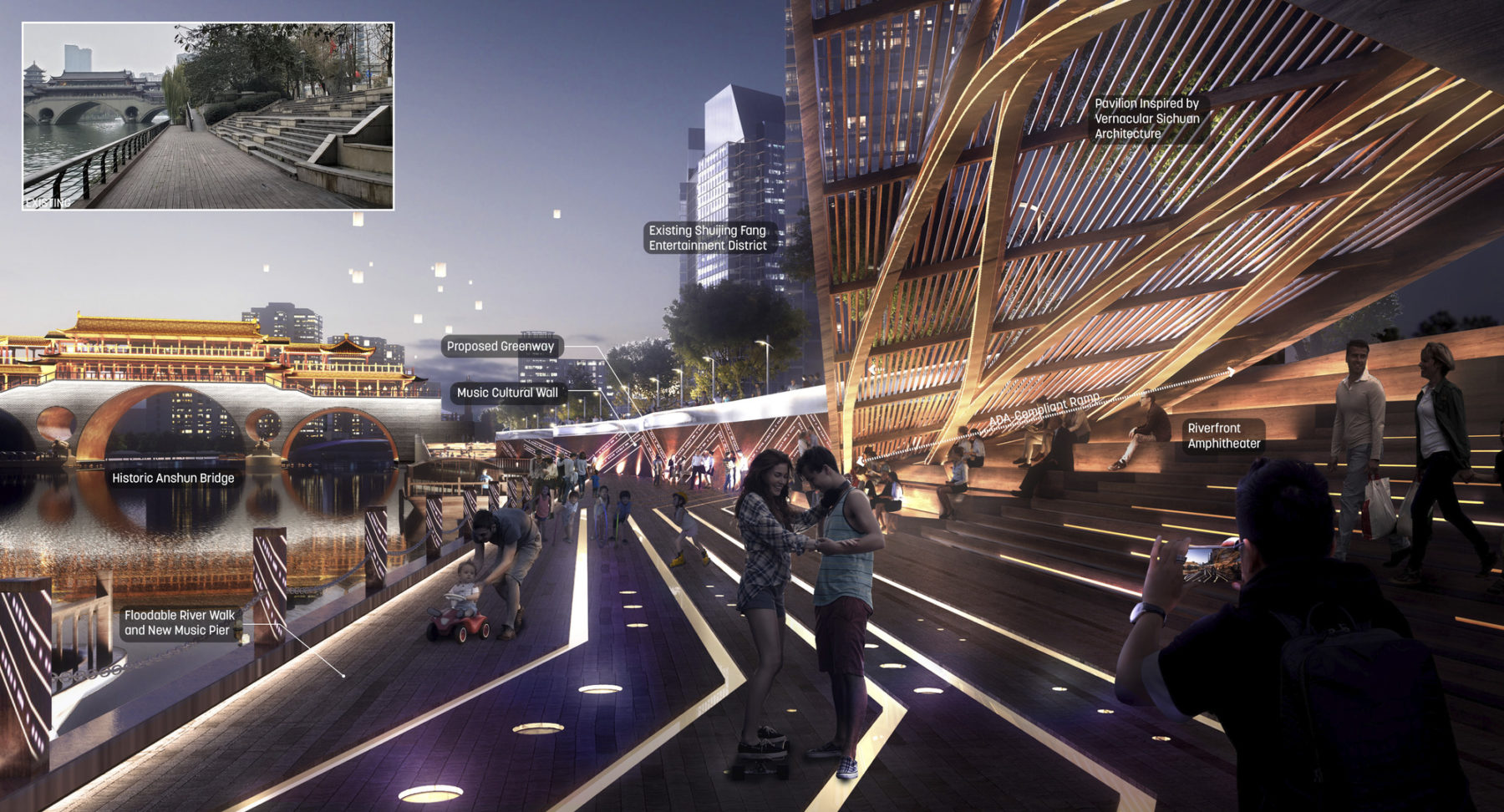
The Jin Riverfront will reinvigorate the public realm along the Jin River, allowing it to take center stage of Chengdu’s cultural expression for centuries to come
Urban planners and geographers are fascinated by the multilayered urban fabric in Chengdu, the first-ever City of Gastronomy by UNESCO, known for its laidback lifestyle, relaxing teahouse culture, and rich history since it settled along the Jin River 2,300 years ago.
As the city grows rapidly, Jin Riverfront becomes increasingly fragmented and encroached by development, with little river ecology and limited access for recreation. A new 8.2-kilometer-long (5 miles) waterfront greenway park that links the scattered historic destinations will provide an uninterrupted waterfront experience and reestablish river ecology.
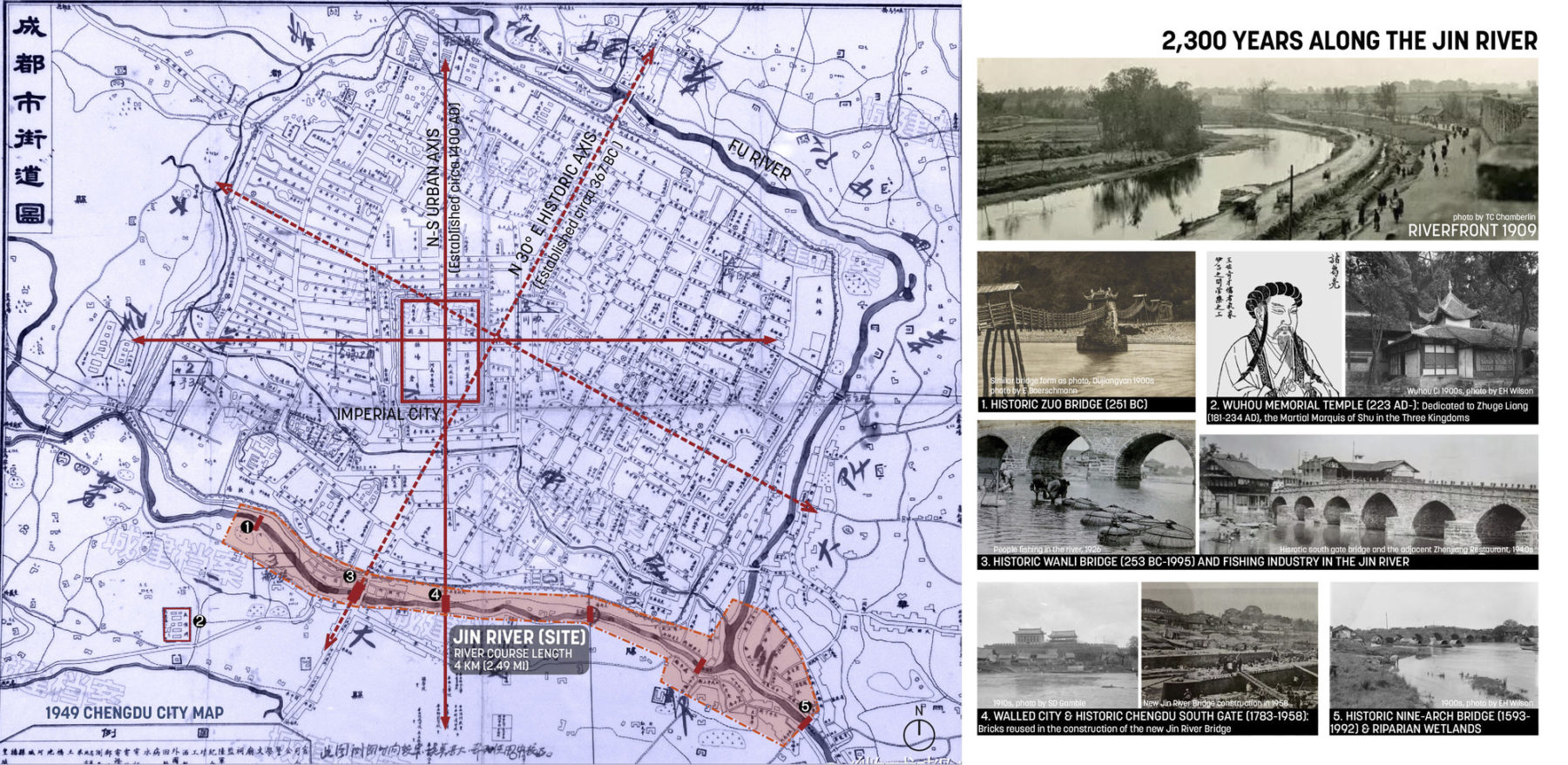
A 2000 years old northeast grid and a 600 years old true north grid coexist in Chengdu, intersecting with Jin River and creating an intricate urban fabric
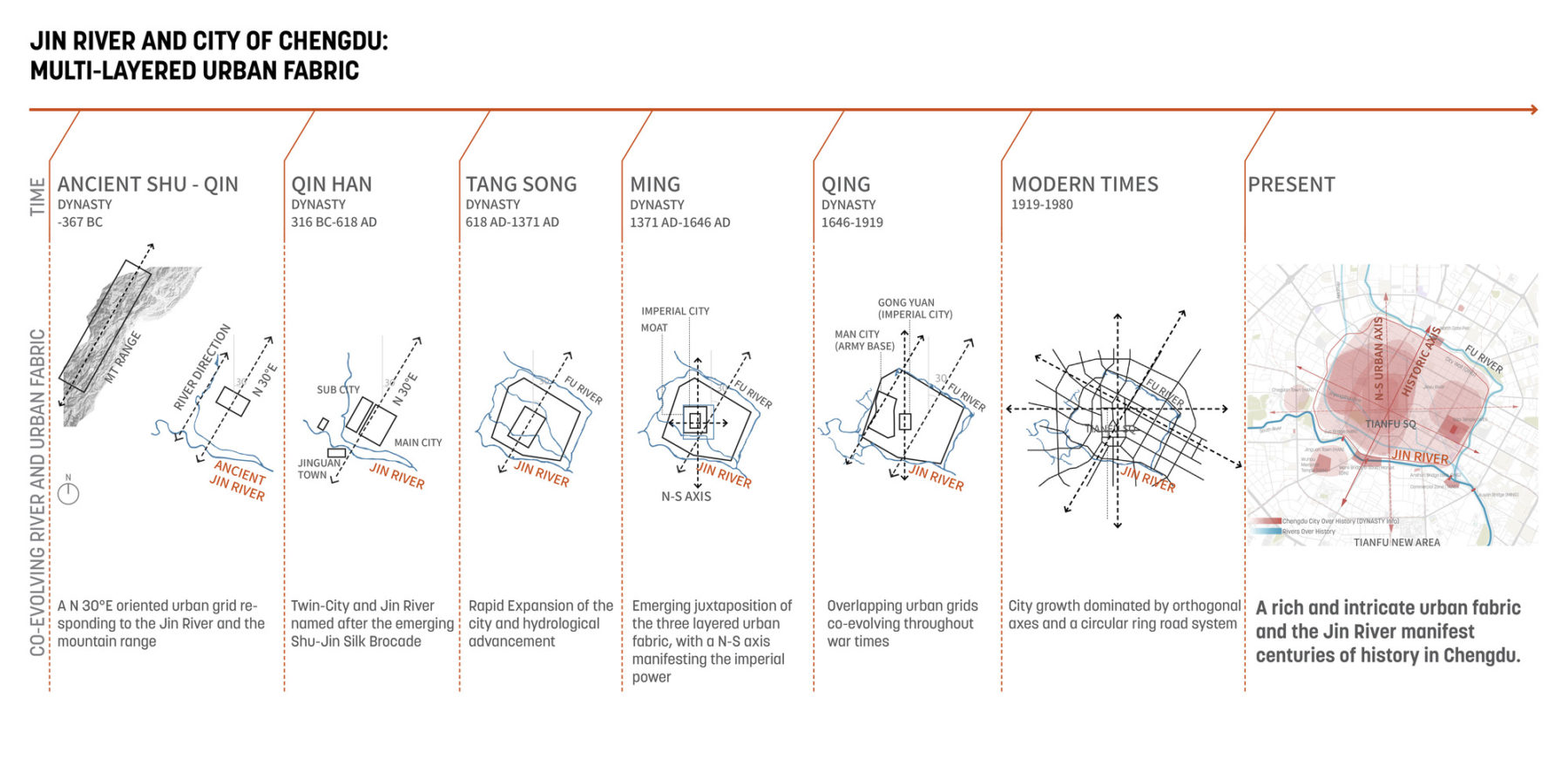
The juxtaposed urban grids from different imperial eras manifest the intimate relationship between the river and the city throughout history
Strolling along Jin River today, the city’s rich heritage and outdoor experience are frequently interrupted by disconnected paths and urban encroachment. As new bridges and roadways expand rapidly to accommodate burgeoning traffic, the riverfront park becomes increasingly narrower and fragmented, with little aquatic vegetation insight or river access for recreation.
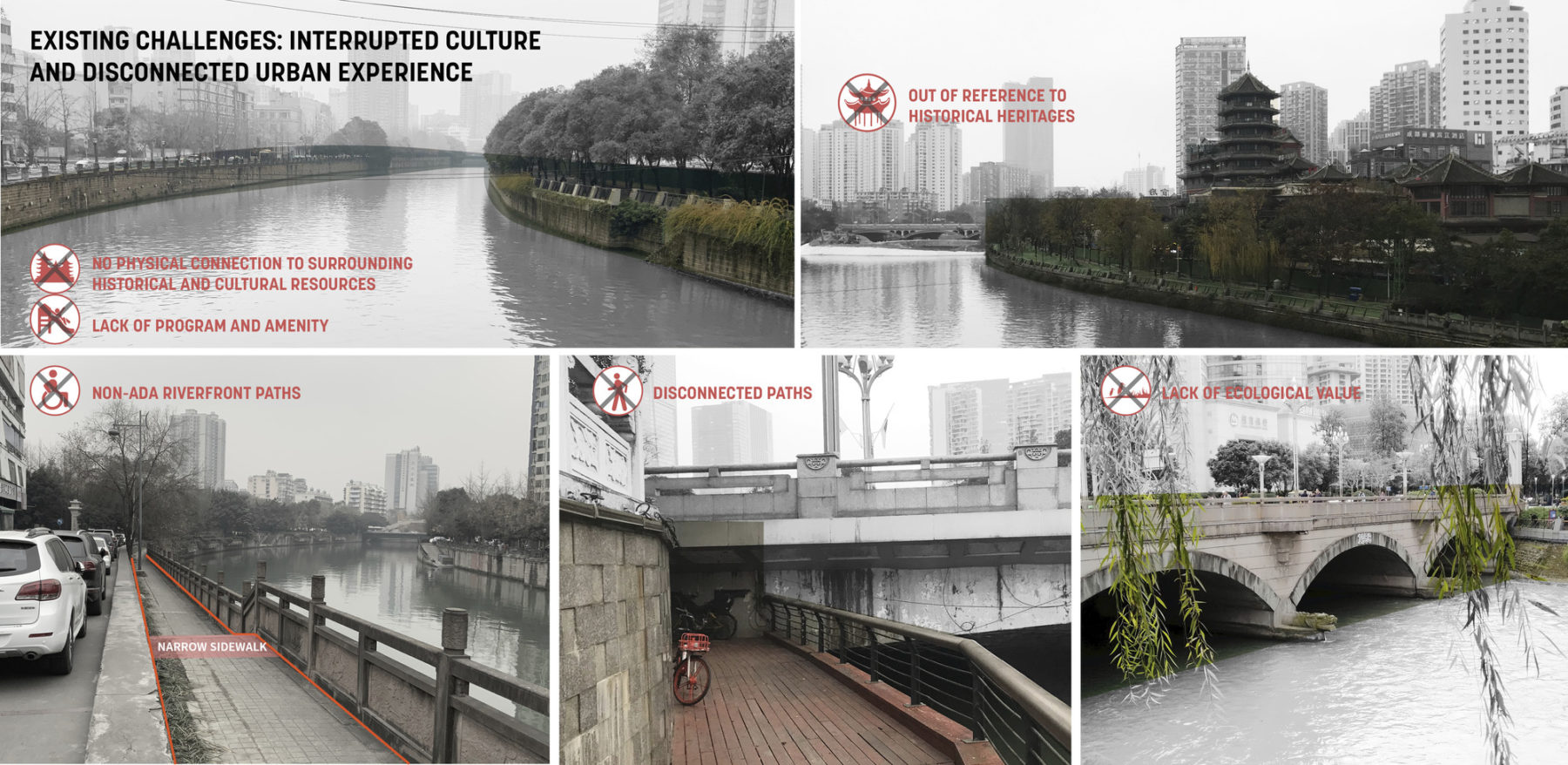
The city’s rich heritages and outdoor experience are frequently interrupted by disconnected paths and urban encroachment
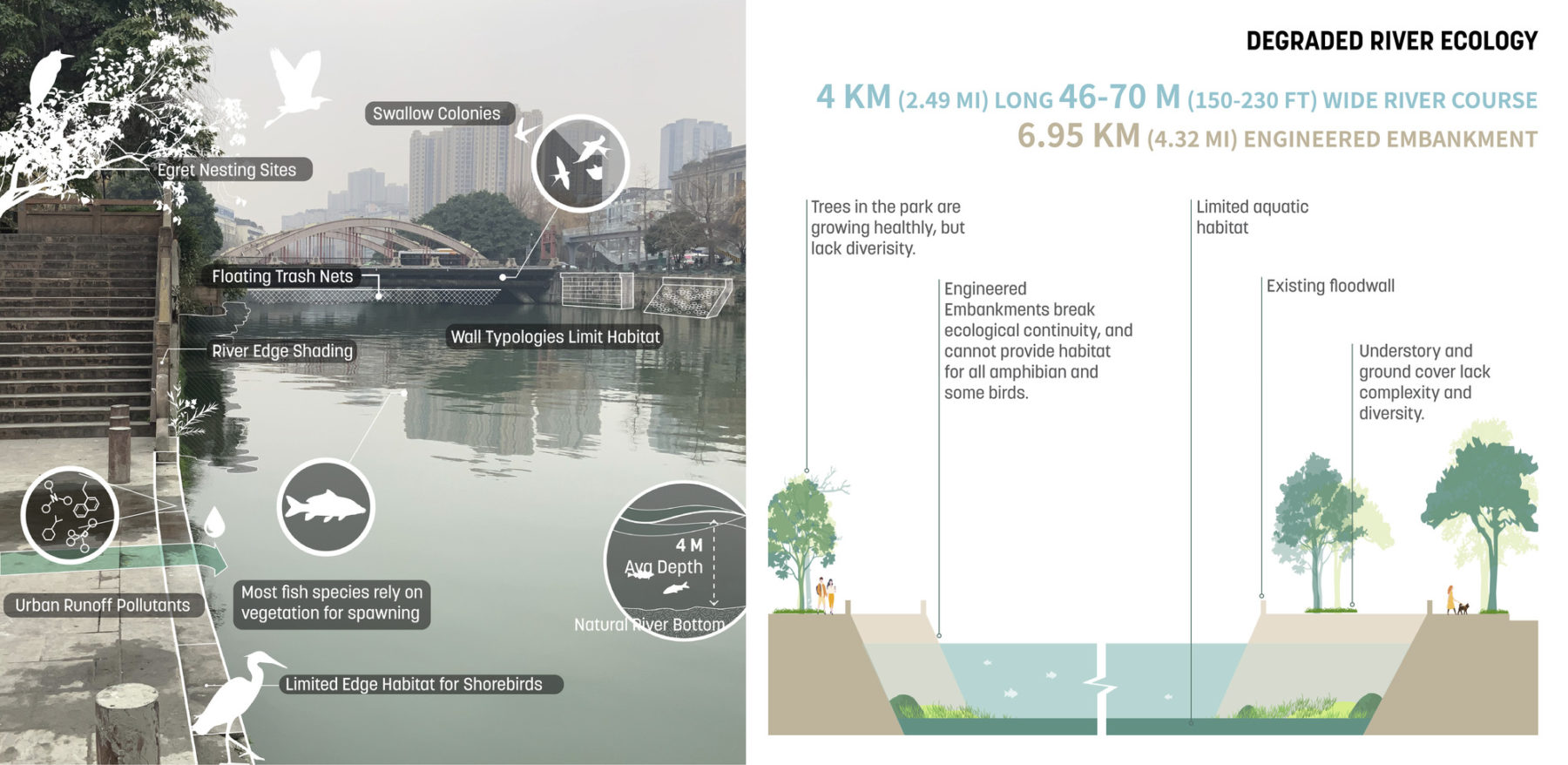
Miles of stark flood walls support little aquatic wildlife and limited public access for recreation
Fortunately, thousands of mature trees along the riverbanks protect the riverfront from further urban encroachment and provide much-needed shade and shelter for people and limited urban wildlife. However, three dominant species—Ginkgo biloba, Ficus virens, and Cinnamomum camphora—provide continuous canopy coverage but lack species and spatial diversity.
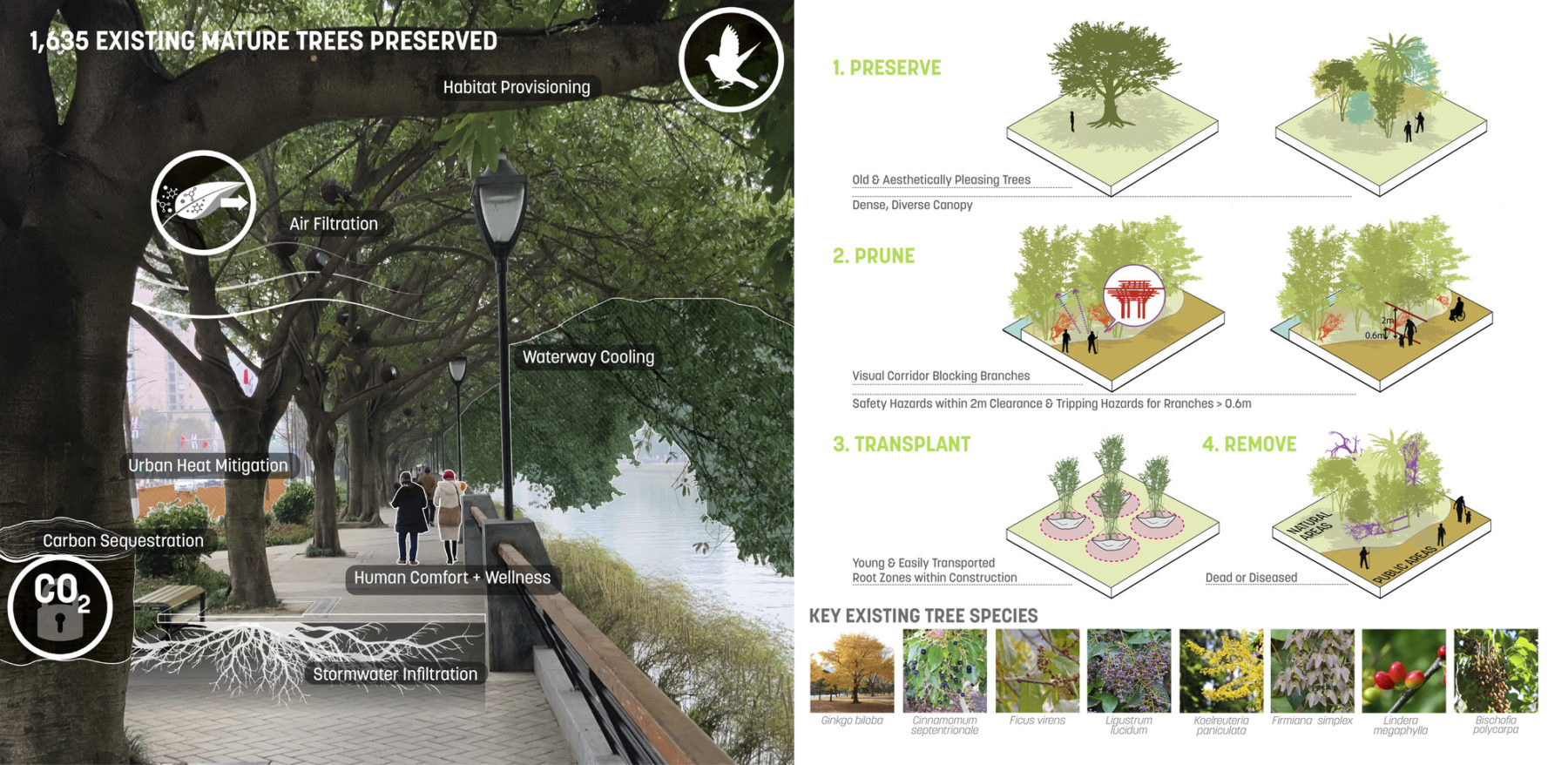
Thousands of mature trees along the riverbanks protect the riverfront from further urban encroachment and provide much-needed shade and shelter
All trees above 15cm DBH (Diameter at Breast Height) were documented through an onsite survey and nearly all were preserved. Visually permeable, biologically diverse plant communities will replace homogeneous and dense ground cover.
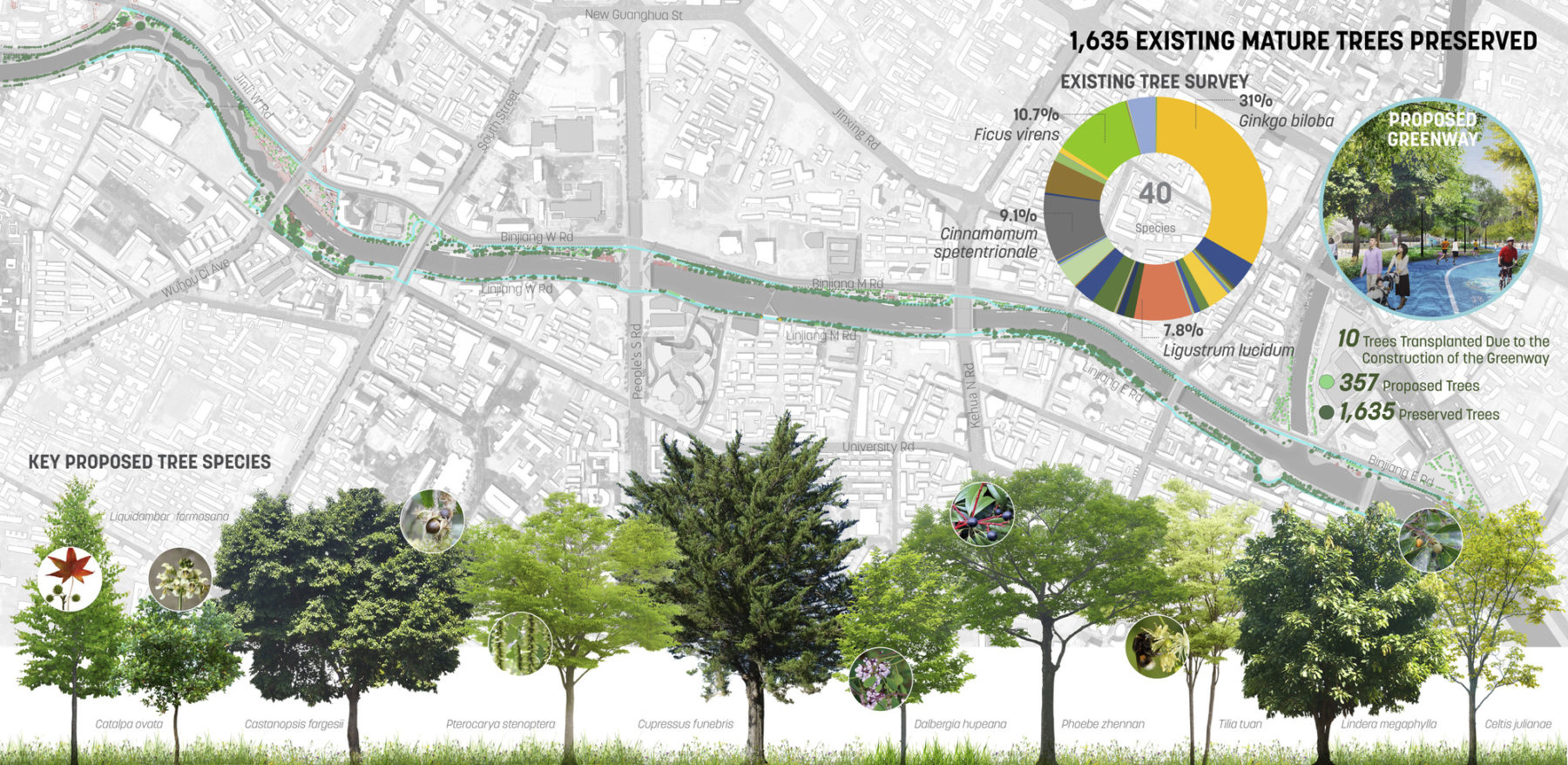
All trees above 15cm DBH (Diameter at Breast Height) are documented through an onsite survey and nearly all are preserved
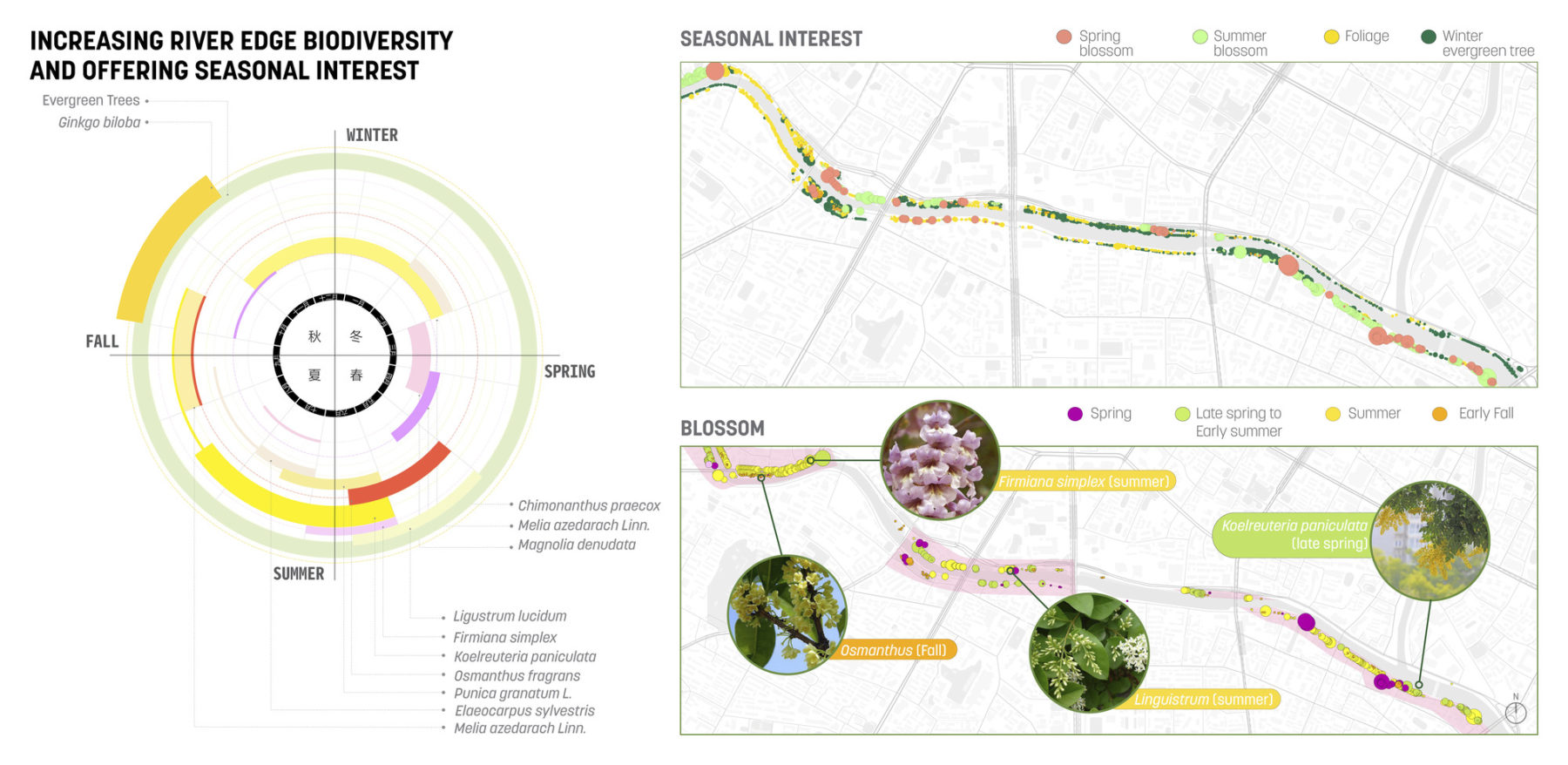
Increased tree species diversity not only supports higher river edge biodiversity but also offers seasonal interest to the public
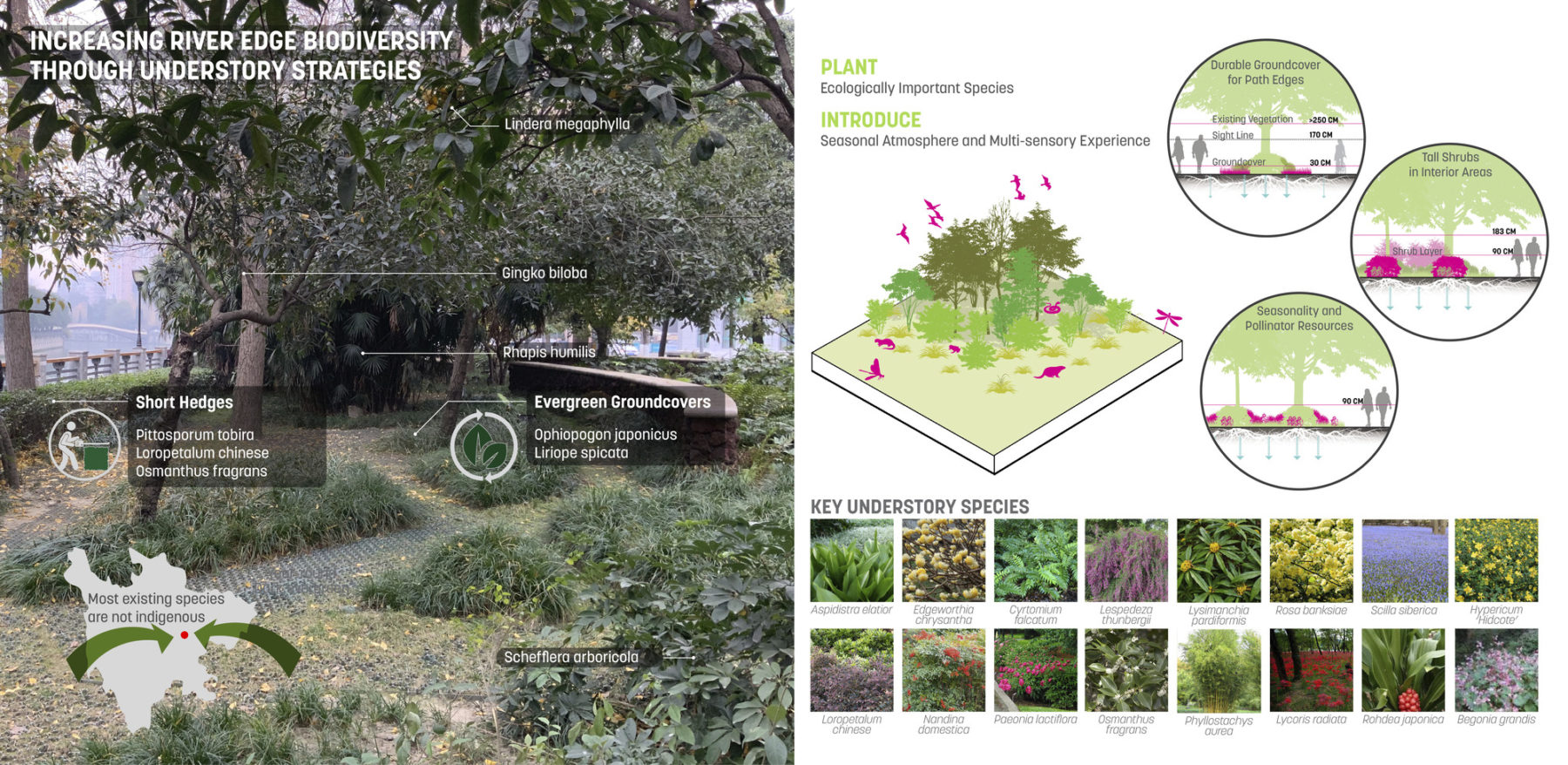
Visually permeable and biologically diverse plant communities replace homogeneous and dense ground cover
A new, 8.2 kilometer-long (5 miles) greenway that links the previously scattered historic destinations will provide an uninterrupted waterfront experience for pedestrians and cyclists. The 6-meter wide multimodal greenway maneuvers through the tree bosques to offer a sense of discovery while minimizing the need to transplant existing large trees. It ascends to a skywalk above the dense Ficus tree canopies in areas where there is not enough space for the full 6-meter wide trail. The canopy walk also offers unique and refreshing vistas of the river and the surrounding neighborhoods.
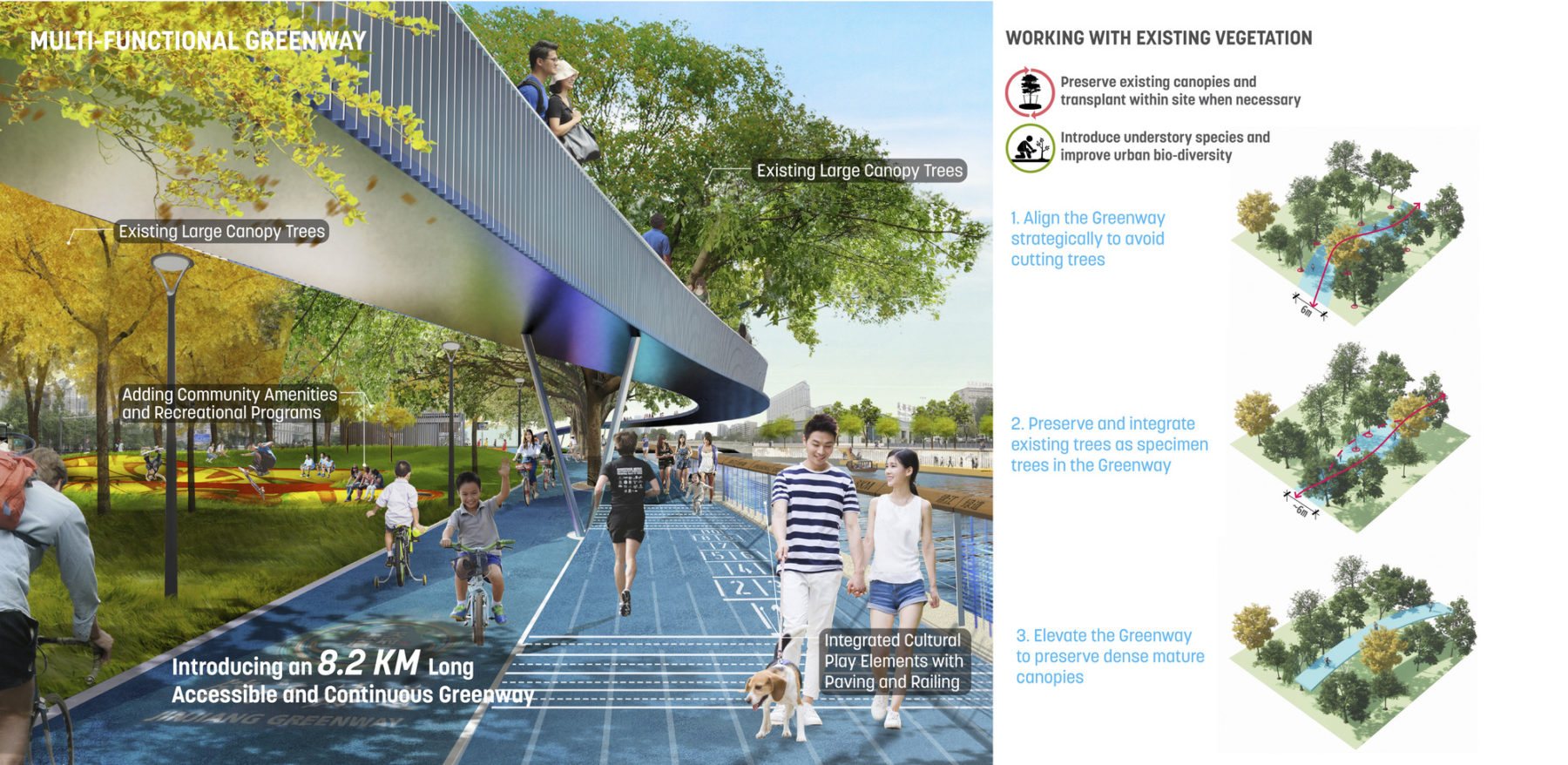
The greenway ascends to a skywalk above the dense ficus tree canopies in areas where there is not enough space to protect trees and offer elevated vistas to the river
Between the tree bosques and the river, the utilitarian and stark flood walls are re-envisioned in a pragmatic way to build a symbiotic relationship between the river and the riverfront parks. These strategies include creating strong visual and physical access to the water and reestablishing a desperately needed riparian buffer that allows aquatic habitat to support local fauna. Where space is constrained and flood control regulation prevents embankment retreat, a boardwalk system uses the wall as an anchoring structure and transforms it into a mural of the site’s long-buried history.
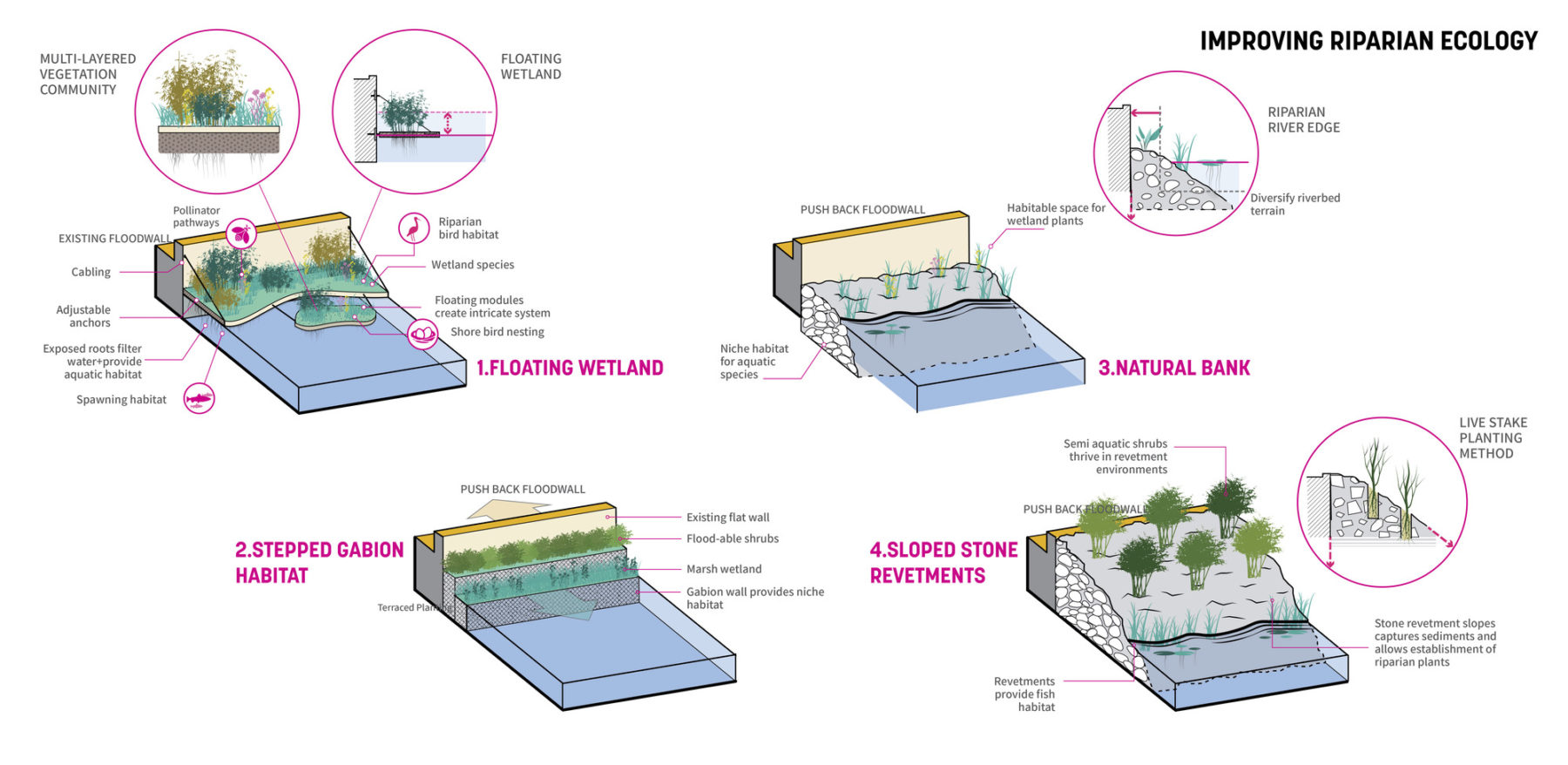
Flood walls are re-configured to reestablish a riparian buffer and aquatic habitat to support local fauna
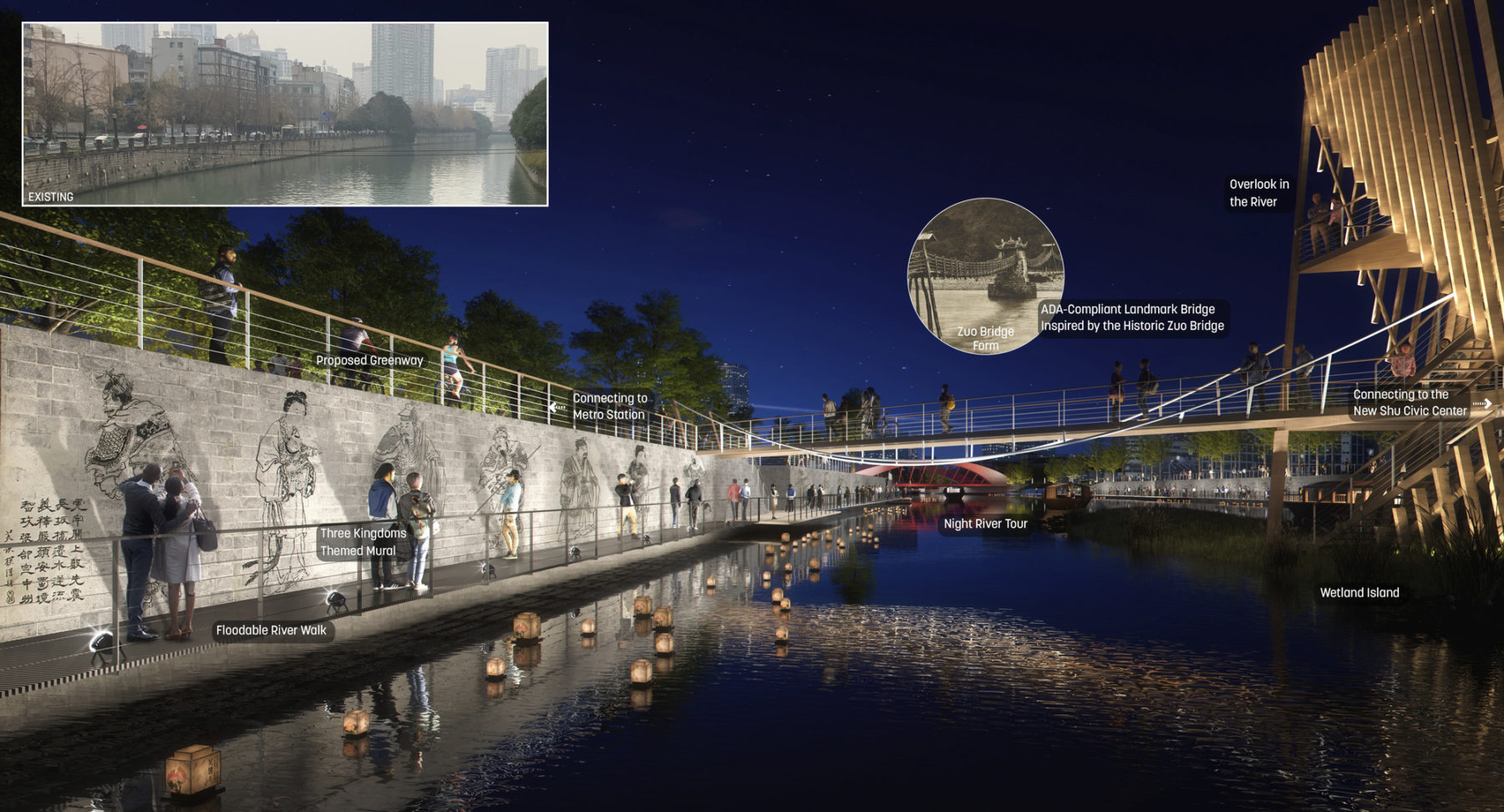
A boardwalk takes advantage of the flood wall as an anchoring structure and transforms it into a mural of the rich history buried ages ago
Wanli Pier, a significant heritage site, is largely deserted and hidden behind the retaining walls. Once unveiled, it will reconnect the bustling nightlife across the street with the river. A new amphitheater reconciles the abrupt elevation changes and overlooks the new subway station plaza across the river. For the first time over several decades, the opposing riverbanks will start to have a spatial, visual, and programmatic dialogue. The new Wanli Pier will be a hub of commercial and cultural programs, public transit, and boat tours on the river.
Large ficus and camphor trees on Wanli pier are preserved while strategically retreating the stark floodwalls. The walls protecting the root zones of the existing trees become expressive galleries telling the story of the pier while leading visitors towards the river. Floating wetlands soften the hardscape near the pier.
Upstream from the Wanli Pier, new riparian zones reframe the shallow water into sinuous courses to foster a wide array of microhabitats. Varied water velocity, depth, light level, and vegetation composition reintroduce a healthy aquatic ecosystem to the river. Egrets and other waterfowls will no longer struggle to find a resting area between the vertical walls and the bustling urban life just meters away.
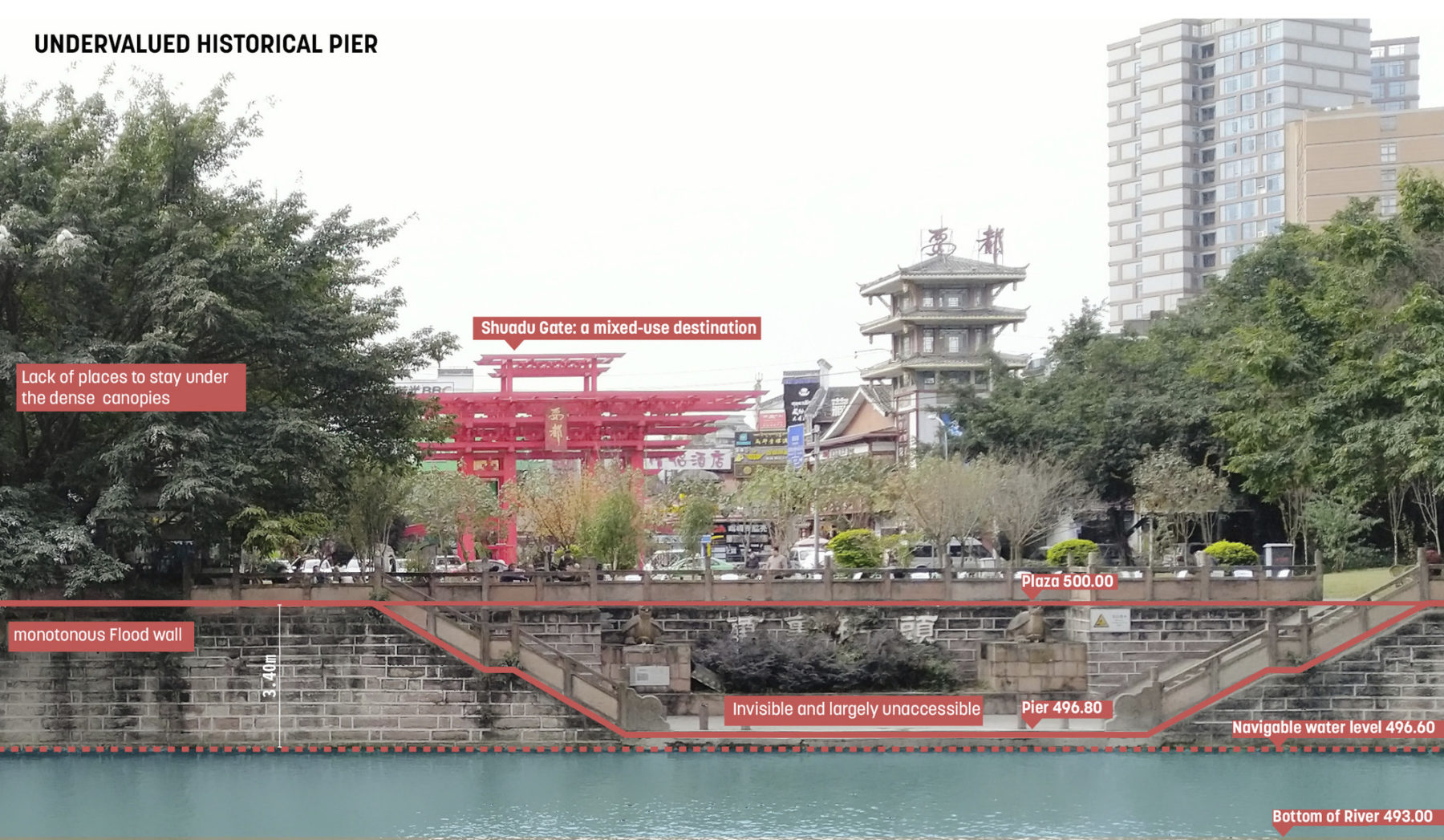
Wanli Pier, a significant urban heritage site, is largely deserted and shies away behind the retaining walls
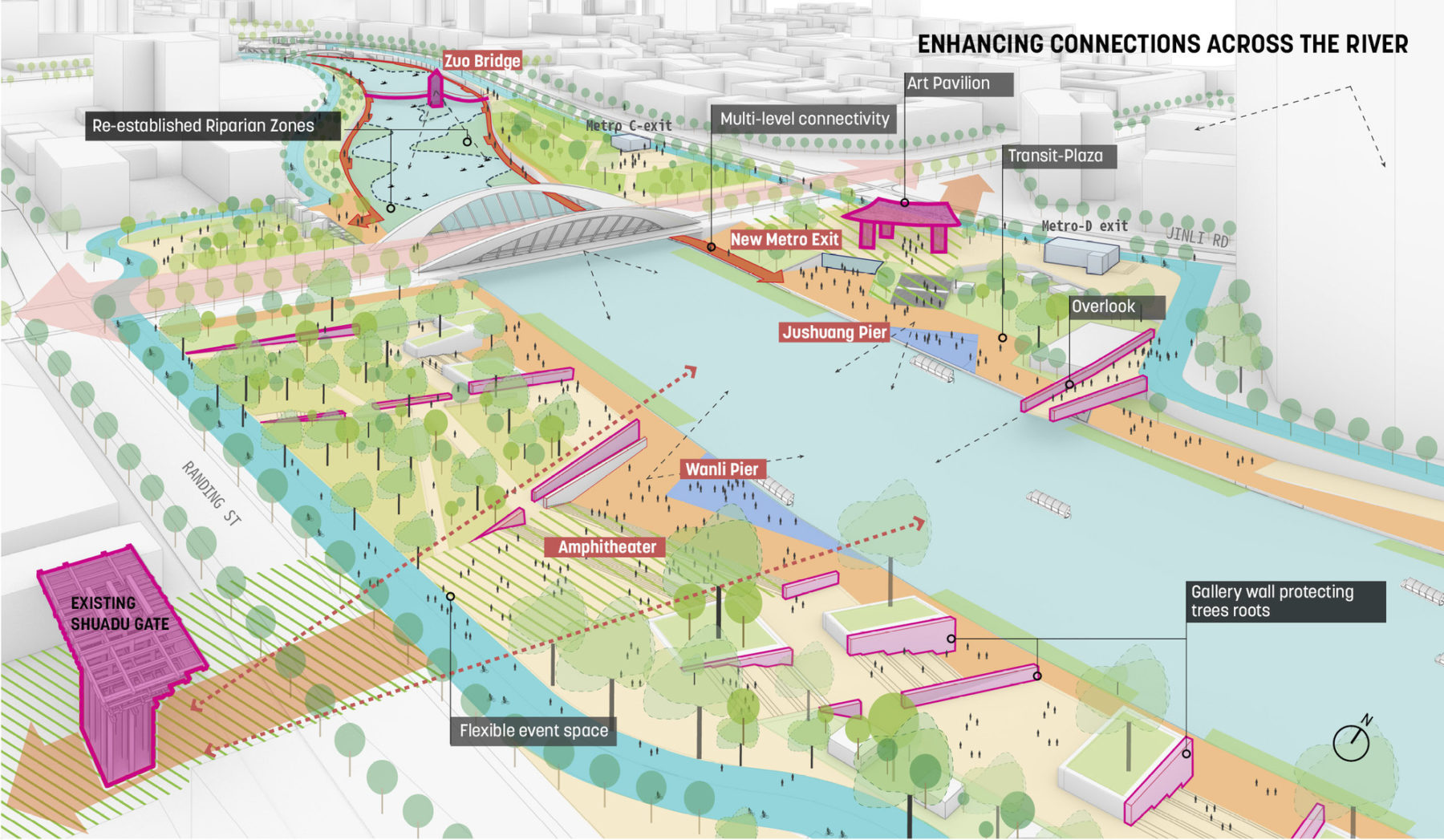
For the first time over several decades, the opposing riverbanks will start to have a spatial, visual, and programmatic dialogue
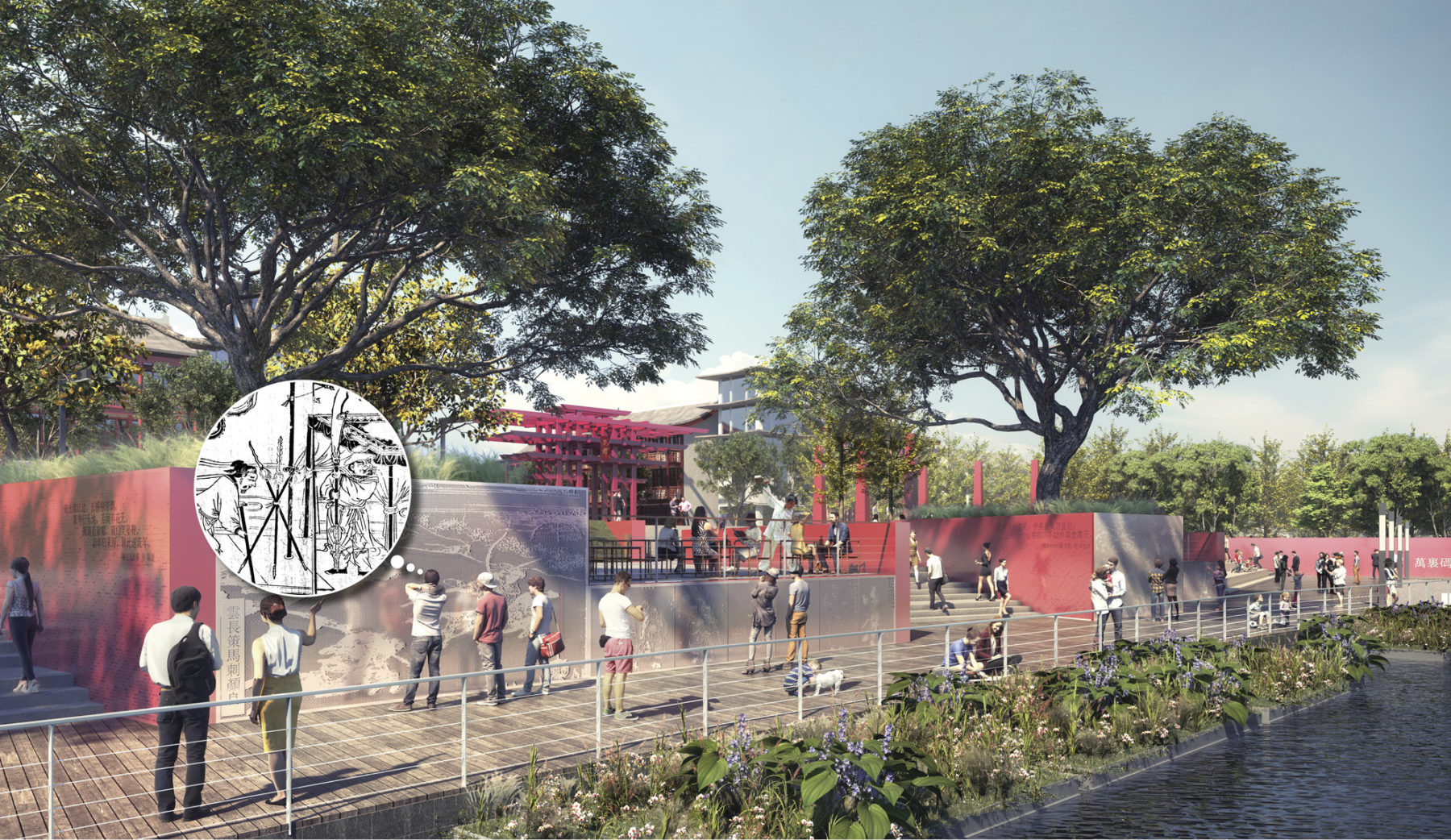
The new pier will celebrate the site’s history and ecology. The walls protecting the root zones of the existing trees become expressive galleries of history while leading visitors towards the river.
Jin River has witnessed 2,300 years of vibrant urban culture. It is a pivotal time of history to reinvigorate the public realm along the riverfront to be more equitable, open, and resilient, so it can continue to take the center stage of Chengdu’s cultural expression for centuries to come.
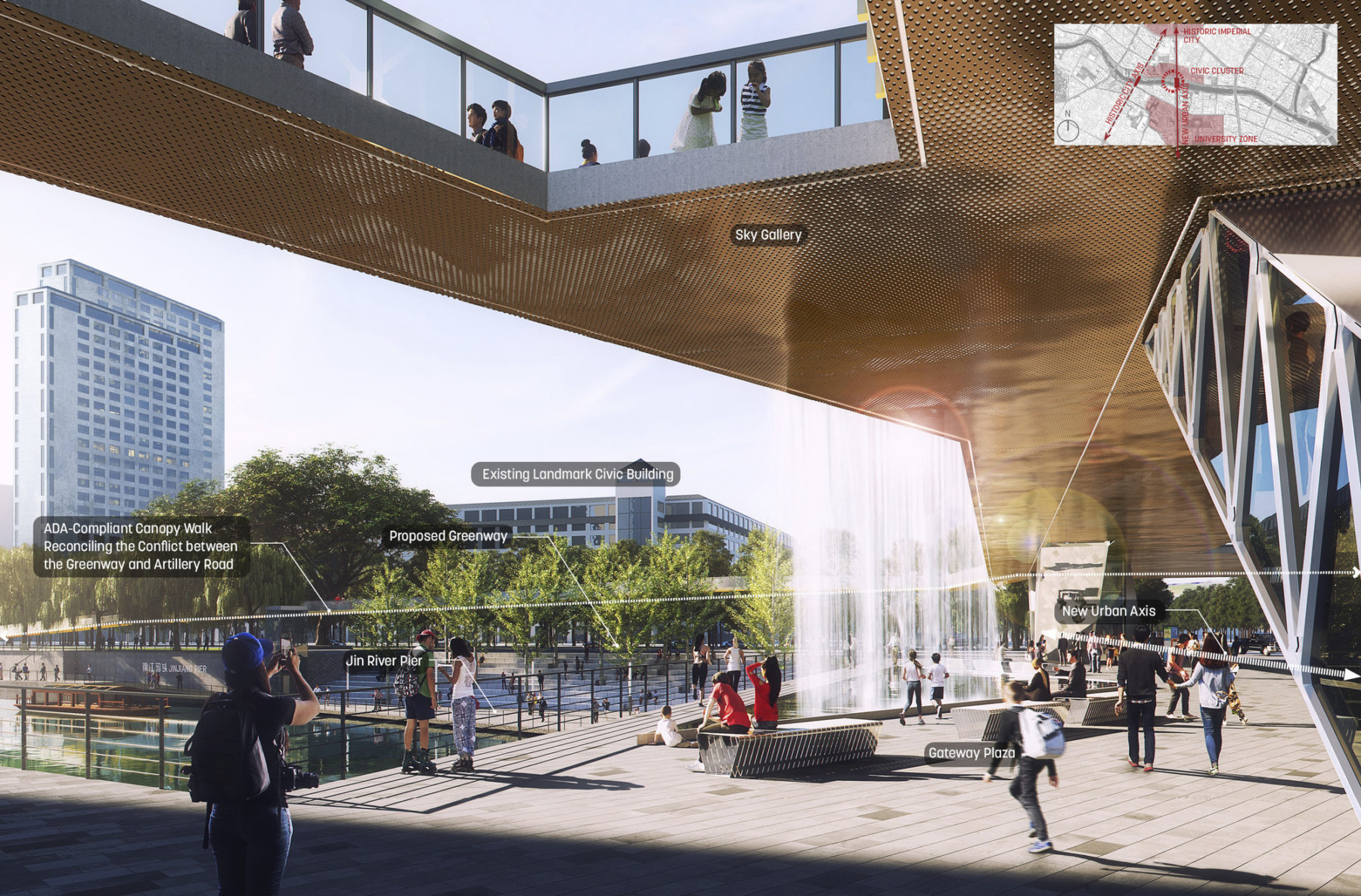
Elevated overlook connects canopy walks and offers panoramic views of the river, redefining Chengdu’s waterfront gateway
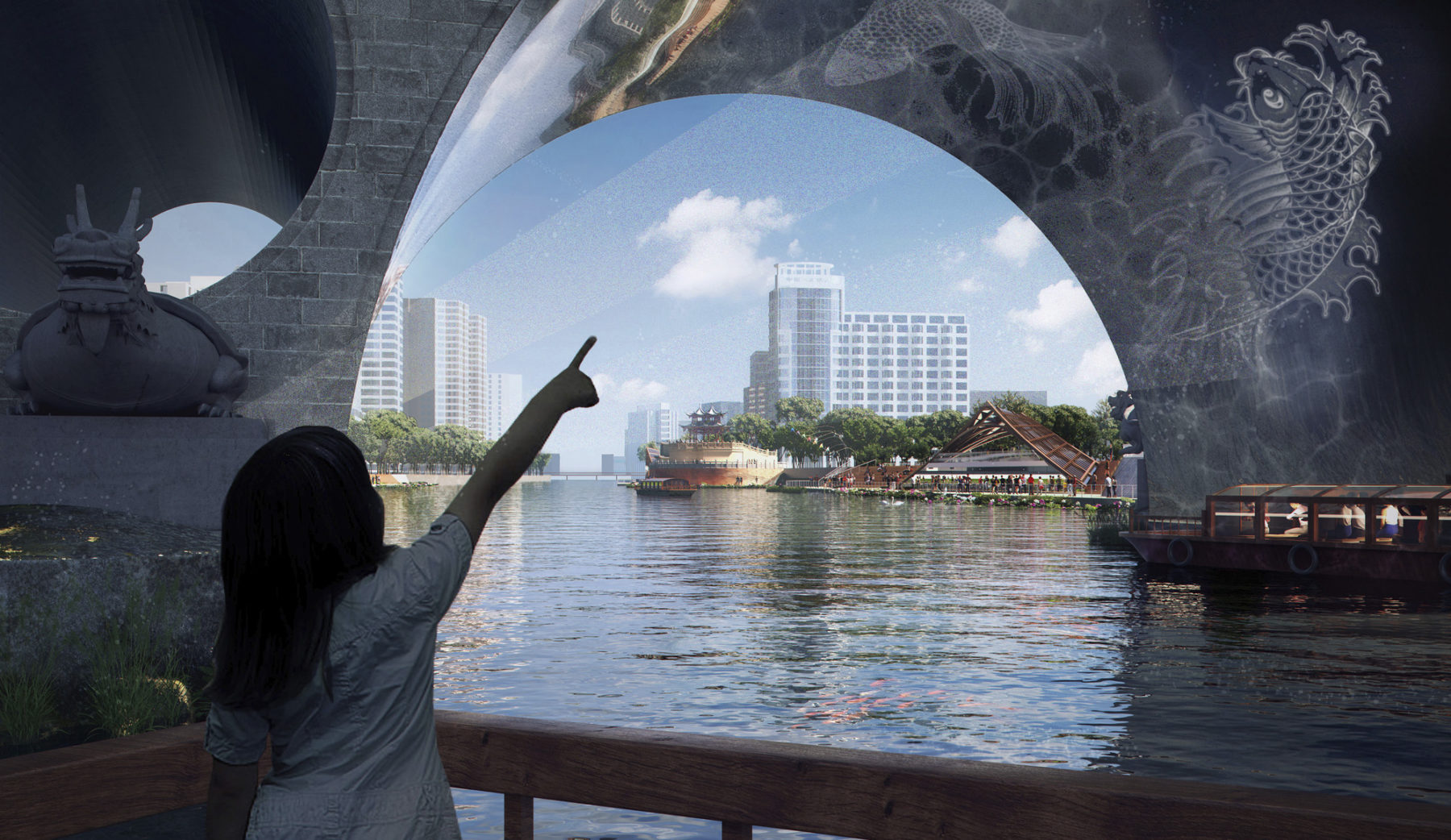
Boat tour programs provide a new perspective to experience the dynamic river
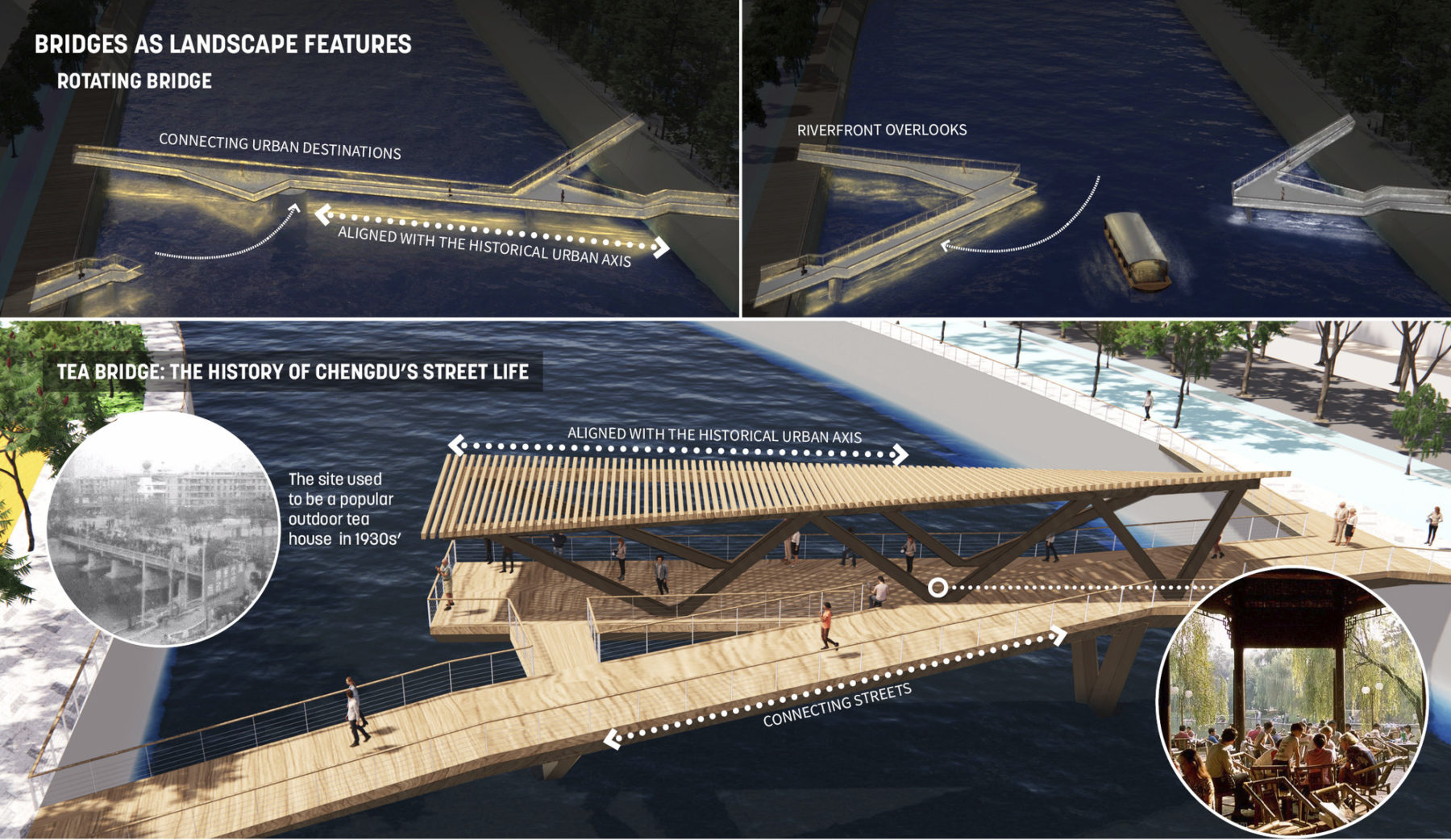
New pedestrian bridges improve accessibility across the river and add a contemporary interpretation of the history
For more information contact Tao Zhang.